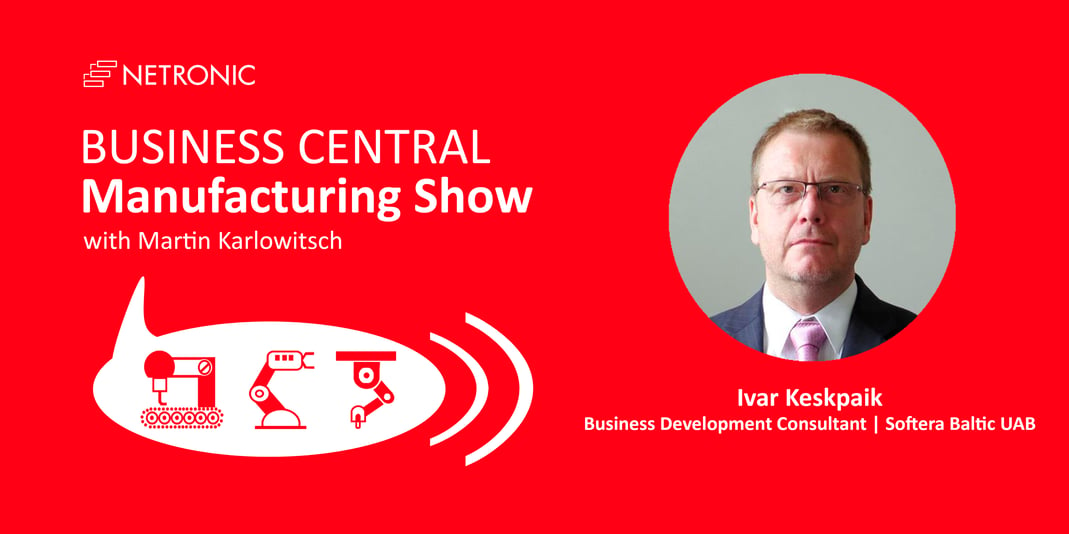In his latest podcast episode, Martin hosted Ivar Keskpaik, who, amongst a plethora of other roles and positions, works as a Business Consultant for Softera Baltic, Lithuania.
He also is an Interim TOP Manager, Business Development Consultant, and Project Manager who has been working in different countries for more than 25 years with experience in logistics (including e-commerce), supply chain, production/operations, transport, and crisis management. Ivar has held various positions, like CEO, Logistics Director, Crisis Manager, and Project Manager for several holdings owning pharmaceutical & cosmetics, wood & furniture, garment production & retail, FMCG production & physical distribution companies, and crude oil-oil products terminals. He has also consulted Estonian Railways, seaports (Estonia, Montenegro), (HITECH) assembly plants, and hospitals to increase their throughput and optimize operating expenses. In addition, Ivar has developed a TOC1-based flex resource management application suitable for diverse types of logistics/distribution centers and labor-intensive productions.
He holds an MSc in Physics, is a chartered engineer, a certified Theory of Constraints (TOC) practitioner, and has been titled the “most famous Interim Manager of Estonia” by the Magazine “Director”. Ivar and Martin had a lively discussion on how manufacturing companies working with Microsoft Dynamics 365 Business Central can apply the Theory of Constraints.

Martin introduced the podcast's topic by asking Ivar to explain the Theory of Constraints (TOC) shortly. As Ivar outlined, this concept was developed by Eliyahu M. Goldratt in the late 70s of the last century and describes a management philosophy and methodology that allows one to focus only on the constraints in a process and to make good bottom-line results for a short period in any type of company. TOC is more complex than other management theories, such as Lean or Six Sigma, and Ivar admitted that it took him 20 years to grasp it fully.
As Ivar went on, the high complexity of TOC lies in its being based on a flow-based approach and not on a resource-based one. Flow-based thinking is about making sure things move smoothly and efficiently from start to finish, therefore trying to detect the constraints - or bottlenecks - in a process and maximizing them to the maximum flow. Transferring this to the typical Business Central manufacturing customers, namely SMBs, their constraints are always on resources. However, typically the bottleneck isn't stable, but it keeps on shifting from one work or machine center to another.
Once the constraint has been detected - by scrutinizing the workload of the different capacities - the planning must only be done for this resource. The workload should not be distributed equally among all resources to remove the constraint.
Talking about best practices for implementing TOC at manufacturing companies using Business Central, Ivar related that it always starts with a visit to the customer and talking to the management board to understand the company's problems. Then, of course, there will be an inspection of the shopfloor to see and understand the technologies the customer is using. Based on these findings, the bottlenecks are then analyzed: where are they located? Are they floating or not? etc. After that, the planning and scheduling part will be dealt with. But, as Ivar stressed, the first step always will be to detect the bottleneck.
Often, customers mistakenly think that their most expensive resource is their bottleneck and hence are not happy when hearing that to remove the constraint, they will have to disbalance their resources and even take away workload from their most expensive machine. They fear that this will bring their production cost up or that the cost per unit of this machine will increase significantly.
Ivar encountered these arguments, in which the conflict between the cost-based approach and the flow-based approach becomes evident, by pointing out that both approaches have the goal to make a profit but that the flow-based approach will bring results like better profits, a bigger turnover, and higher customer satisfaction in a comprehensively shorter time than the resource-based approach. The bigger flow through removing the bottlenecks will lead to delivering more work orders in time. Sometimes, Ivar even offers to set up a mini-project for the respective company so that the decision-makers can see the results and then discuss the main project.
Regarding the integration of TOC with Business Central, Ivar revealed that his company is developing an application called the "Balancer" to facilitate TOC implementation. The application aims to assist with capacity planning, bottleneck identification, and constraint management within the production process, but it is planned that the tool will also eventually include warehousing.
When asked about the challenges of implementing TOC, Ivar stated that the transition from resource-based to flow-based thinking can be challenging for employees. It requires a change in mentality and a paradigm shift, as many business owners are accustomed to cost-based approaches. The process involves identifying constraints, planning and scheduling around them, and implementing buffer management strategies to ensure optimal throughput. To illustrate this, Ivar shared some real-life examples of how TOC has been applied successfully in various industries, including highly automated production plants.
The conversation concluded with Ivar's advice to business owners: Try implementing TOC and witness the remarkable results. Despite the initial challenges, the benefits of increased profitability, shorter lead times, and improved customer satisfaction are well worth the effort.
The conversation ended with the prospect of a follow-up meeting to delve deeper into TOC implementation and its practical applications in the context of Microsoft Dynamics 365 Business Central.
You can tune in below 👇 or anywhere you get your podcasts.
📢 What to listen for
[2:02] The Theory of Constraints (TOC) brief explanation
[3:12] The concept of flow-based thinking
[5:50] Tools and strategies to identify and remove the floating constraints
[7:47] Best practices to implement TOC at manufacturing companies
[10:20] How to deal with arguments against TOC and the flow-based approach
[15:50] Applying TOC to Business Central
[20:10] Real-life samples of successfully applied TOC
[21:35] Why implementing TOC requires a paradigm shift
